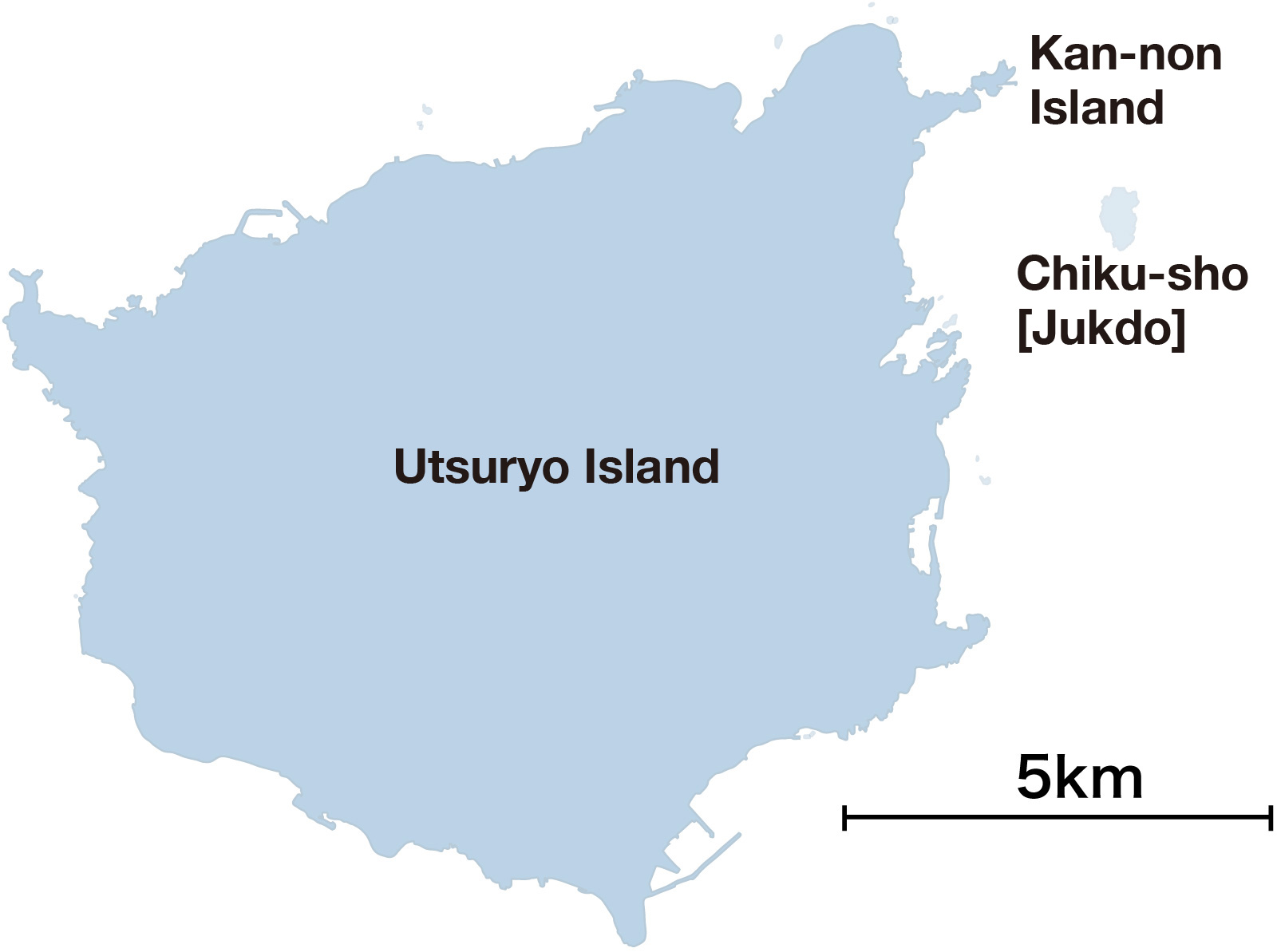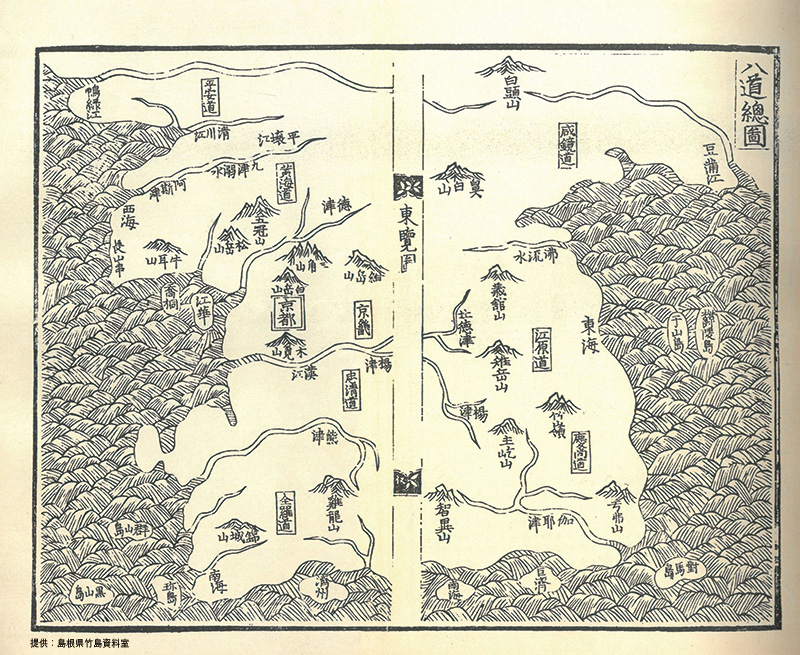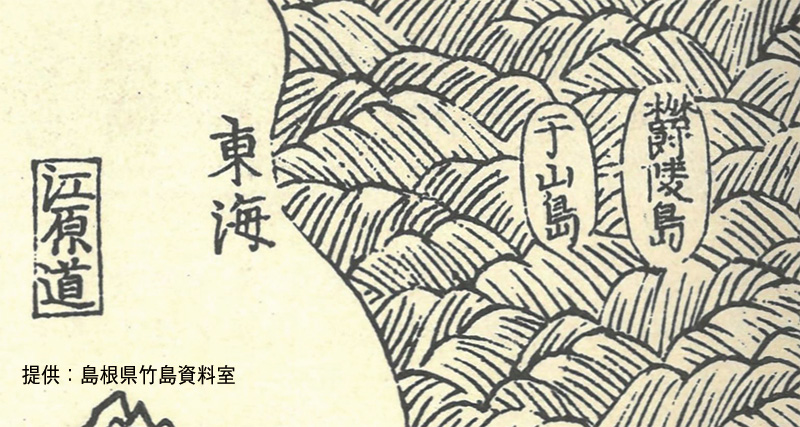Let’s see Korea’s Statement
Korea’s Statement (1)
Korean ancient documents
Korea’s Statement
Korean ancient official documents describe that Takeshima belongs to Korea.
Numerous early Korean government publicationsmention Dokdo, which demonstrates that Korea has long recognized and governed Dokdo as Korean territory.Some of the most notable records pertaining to Dokdo in early Korean government publications are listed below:
1454 Sejong Sillok, Jiriji (Geography Section of the Annals of King Sejong’s Reign)
于山武陵二島在縣正東海中
二島相去不遠 風日清明 即可望見
新羅時 稱于山國一云鬱陵島
The two islands of Usan [Dokdo] and Mureung [Ulleungdo] are located in the middle of the sea due east of the hyeon [Uljin County].
The two islands are not far apart from each other and are visible on a clear day.
They were called Usan-guk or Ulleungdo during the Silla period.
1531 Sinjeung Dongguk Yeoji Seungnam (Revised and Augmented Survey of the Geography of Korea)
于山島 鬱陵島
一云武陵一云羽陵 二島在県正東海中
Usando [Dokdo] Ulleungdo
Also called Mureung or Ureung, the two islands are located in the middle of the sea due east of the hyeon [Uljin County].
p.14, Dokdo : Beautiful Island of Korea, Ministry of Foreign Affairs, the Republic of Korea
Annotation
According to the ROK’s statement, these ancient documents include a record of Takeshima.
The documents cited by the ROK do not include any description of Takeshima, and thus cannot be regarded as proof that the ROK owned Takeshima.
The statement by the ROK does not explain any relations between the cited documents and the anticipated conclusion, and includes false interpretation of the documents.
(1) The ROK’s statement does not elaborate where Takeshima (named Dokdo in Korean) is recorded in the documents.
(2) In 1531 Sinjeung Dongguk Yeoji Seungnam, “Usando” appears between the Korean Peninsula and Utsuryo Island on the Map of Eight Provinces of Korea contained in said document (right), and cannot be considered to be Takeshima.
(3) The description in 1454 Sejong Sillok, Jiriji, “[t]he two islands are not far apart from each other and are visible on a clear day,” is expanded on in 1531 Sinjeung Dongguk Yeoji Seungnam with “trees on the hills and beaches at the foot are visible.” Since Takeshima has no trees, the descriptions in those documents cannot mean that Takeshima is visible from Utsuryo Island.
Hachido-sozu (Map of the Eight Provinces of Korea (Paldo-chongdo)), Sinjeung Dongguk Yeoji Seungnam, vol.1 - 55 Edited by the Koten Kankou Kai (Gojeon Ganhaeng Hoe)
Published by the Toukoku Bunka-sha (Dongguk Munhwa Sa), 1958 (Showa 33)
[Contribution] Shimane Prefecture Takeshima Reference Room
Korea’s Statement (2)
Ahn Yong-bok’s trip to Japan
Korea’s Statement
Ahn Yong-bok protested to Japan that Takeshima belonged to Korea. As the result of the negotiations between Korea and Japan, Takeshima was decided to be part of Korea, and Japan prohibited the Japanese from traveling to Takeshima.
The Republic of Korea states that a Korean named Ahn Yong-bok traveled to Japan, and protested that Takeshima belonged to Korea, which brought Japan and Korea to start negotiations, and led them to confirm that Utsuryo Island and “Dokdo” were part of the Korean territory.
Korea’s territorial sovereignty over Ulleungdo and its ancillary Dokdo was confirmed through the diplomatic negotiations between the Korean and Japanese Governments (Ulleungdo Dispute) in the 17th century.
…
Ahn Yong-bok, who lived during the reign of King Sukjong of the Joseon Dynasty, made two trips to Japan, the first of which was against his own will in 1693 when he was captured by the Japanese in Ulleungdo. The 1693 kidnapping of Ahn Yong-bok triggered the territorial Dispute over the Ulleungdo between Korea and Japan. The kidnapping is significant because the jurisdictional status of Ulleungdo and Dokdo was confirmed in the course of the diplomatic negotiations. Regarding Ahn Yong-bok’s second trip to Japan in 1696, a record of Ahn Yong-bok’s statement can be found in Sukjong Sillok (Annals of King Sukjong’s Reign). It is recorded that Ahn Yong-bok told the Japanese fishermen he encountered in Ulleungdo that “Matsushima is Jasando [Dokdo] which is Korean territory” and that he went over to Japan to lodge a protest against Japan’s encroachment on the Korean territories of Ulleungdo and Dokdo.
p.7,20, Dokdo : Beautiful Island of Korea, Ministry of Foreign Affairs, the Republic of Korea
Annotation
The negotiation failed to settle and broke down. The Edo Shogunate prohibited traveling to Utsuryo Island for the sake of Japan’s friendship with Korea. Travel to Utsuryo Island was prohibited, but that to Takeshima was not.
The ROK asserts that the Edo Shogunate prohibited travel to Utsuryo Island after the negotiation between Japan and Korea, because Japan recognized that Utsuryo Island belonged to Korea.
In fact, the negotiation broke down. The reason that the Shogunate decided to prohibit traveling to Utsuryo Island in January 1696 was, according to the Shogunate’s document, that “it was not wise to ruin a good relationship with a neighboring country.” The Shogunate appeared to have taken into consideration the maintenance of its friendship with Korea despite the difference in views.
It is worth reaffirming here that it was to Utsuryo Island that the Shogunate prohibited travel, not Takeshima.
Ahn Yong-bok did not represent the Korean Dynasty.
The ROK asserts that Ahn Yong-bok went to Japan in May 1696 for the second time, and protested that Takeshima belonged to Korea.
However, Ahn’s actions and utterances were done only in a personal capacity. The Korean Dynasty disregarded his actions, which, in its recognition, had nothing to do with the Dynasty.
Lack of credibility in Ahn’s statement
The statements Ahn made when he was interrogated by Korean government officials on his return to Korea contradict the facts in many regards and lack credibility.
Let’s see Korea’s Statement (3)
1900 Imperial Decree No. 41
Korea’s Statement
Korea issued an Imperial Decree to incorporate Takeshima into Korean territory as “Seokdo.”
On October 24, 1900, the Uijeongbu (State Council), decided that “Ulleungdo shall be renamed Uldo” and “the post of the Island Chief (dogam) shall be promoted to county magistrate (gunsu).” The amendments were approved by the Emperor on October 25, 1900 and declared in the Imperial Decree No. 41 in the government’s official gazette on October 27, 1900.
Article 2 of Imperial Decree No. 41 stipulates that “as regards the districts, all of Ulleungdo as well as Jukdo and Seokdo [Dokdo] shall be placed under the jurisdiction of Uldo-gun (Uldo county),” explicitly including Dokdo among the districts under the jurisdiction of Uldo-gun (Uldo county).
p.24, Dokdo : Beautiful Island of Korea, Ministry of Foreign Affairs, the Republic of Korea
Annotation
The ROK asserts that Korea declared an Imperial Decree in 1900 that provided that Takeshima was put under the jurisdiction of a Korean administrative area (Uldo).
No proof has been provided to identify “Seokdo” as Takeshima

The ROK asserts that “Seokdo [Dokdo]” was in the provision of the Imperial Decree, but provided no proof that Seokdo was the same as Takeshima.
In the “Request for Cabinet Decision Regarding the Change of the Name of Utsuryo Island [Ulleungdo] to Utsu Island [Uldo] and the Change from Island Administrator to County Magistrate” (1900), which was submitted at the time of deliberation on said Decree, it is stated that “the area of the island concerned is 80 ri on the long axis (approx. 34km) and 50 ri across (approx. 21km). This area cannot include Takeshima, 90km from Utsuryo Island.
The Imperial Decree cannot constitute proof of effective rule
Regardless of whichever “Seokdo” in Imperial Decree No. 41 is intended to be Takeshima, the ROK has not provided any proof that Korea effectively ruled Takeshima before and after the declaration of the Imperial Decree. Hence Korea cannot be considered to have established its sovereignty over Takeshima.
| Takeshima - Top |








